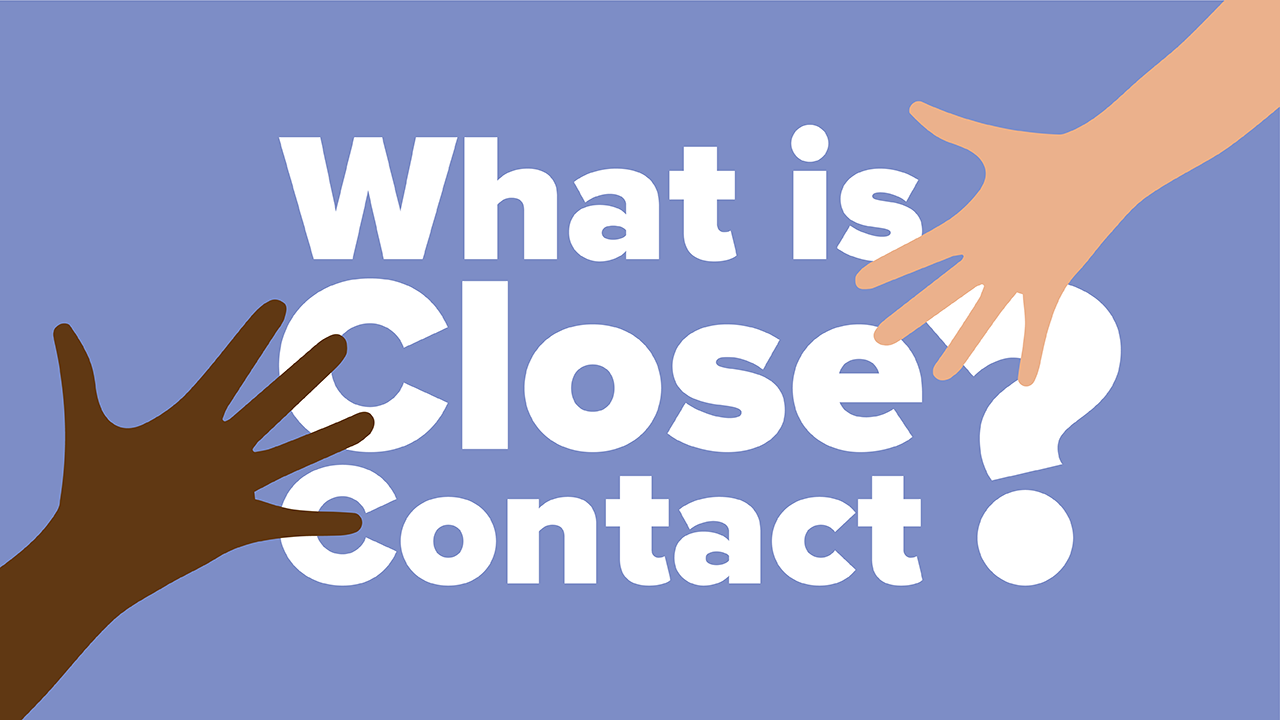
Whether you on-campus attending classes or working at the local Kwik-Trip, you might be worried about having close contact with others. However, there are certain criteria or situations that qualify contact as “close.”
Close contact is defined as being within six feet of a confirmed case, for at least 15 minutes over a 24-hour period, regardless of if a mask was worn. Once you have been in close contact with someone, that means you have been exposed to COVID-19.
Often, you’ll be notified by the individual who has become ill that you’ve been exposed. But what all consists of being in close contact besides being next to someone sick for 15 minutes?
Sharing is no longer caring.
What is NOT considered close contact?
- Passing by someone in a hallway.
- Living in the same building or floor as someone.
- Occupying a space (non-simultaneously) that someone was previously in.
What IS considered close contact?
- Sharing a bathroom. Sharing a bathroom with others who are ill with COVID-19 has risks. Learn more about how to share a bathroom safely.
- Sharing utensils, cups, and dishes. If you are living with someone who is ill with COVID-19, designate a separate set of dishes and utensils or use disposable to limit the risk of close contact.
- Sharing food or beverages. Don’t share drinks with others and never accept drinks from strangers if you’re at a bar or party. Avoid drinking games that involve people drinking out of the same cup.
- Sharing a vape with others. A vape is a smoking device that someone puts their mouth on to inhale smoke or vapors. If you currently smoke or vape, you are at an increased risk for severe illness from COVID-19. If you do have a vape, keep it to yourself. If you don’t have your own, don’t ask to use others’.
- Hooking up with someone. COVID-19 is spread through respiratory droplets and saliva. Kissing or hooking up with someone who has COVID-19 will put you at a high-risk of contracting the virus. Learn more about how to hook-up safely during the times of COVID-19.
Different Scenarios of Close Contact
When trying to figure out how close you were to COVID-19, here are some different scenarios of exposure.
If you’ve been in close contact with someone who has tested positive for COVID-19 or has symptoms...
Get tested 5 days from last exposure.
Wear a mask when indoors and around others, including within the home, for 10 days.
Self-monitor for symptoms for 10 days.
If you’ve been in close contact with someone who is being tested, but no symptoms...
Be extra aware and mindful while waiting for that person’s test results, in case you need to get tested.
If you’ve been in close contact with someone who tested negative for COVID-19...
Continue to follow general COVID-19 safety guidance such as wearing a mask (if comfortable), washing or sanitizing hands often, and physical distancing.
If you’ve been in close contact with someone (A) who is a close contact of a confirmed (B) case...
To help better understand this scenario, let’s say your roommate (A) found out that they were in close contact with someone else who is a confirmed case (B).
Whether or not your roommate is experiencing symptoms, follow general COVID-19 safety such as wearing a mask (if comfortable), washing or sanitizing hands often and physical distance.
If you’ve been in close contact with someone (A) who has been in close contact with someone else (B) who might have been exposed to a confirmed case (C)...
Again, with the roommate analogy, this would be if your roommate’s (A) best-friend’s (B) romantic partner (C) contracted COVID-19. However, your roommate (A) has not been in close contact with their best-friend’s romantic partner (C) – just with their best friend (B).
At this point, you’d be fairly removed from the situation, so your risk of getting COVID-19 is very minimal. But just to be safe, wear a mask (if comfortable), wash or sanitize hands often and physical distance.
Now you know how close is too close for comfort when it comes to close contact with COVID-19. If symptoms develop at any time, please self-report and contact Ask-A-Nurse.